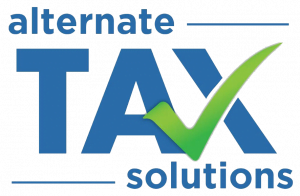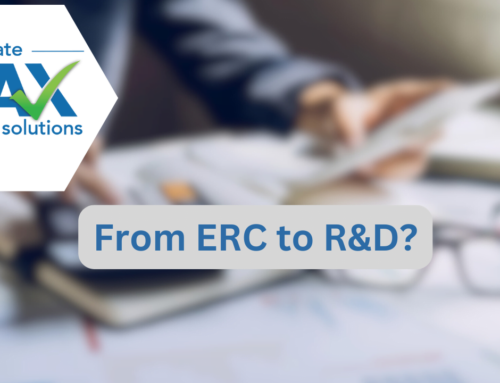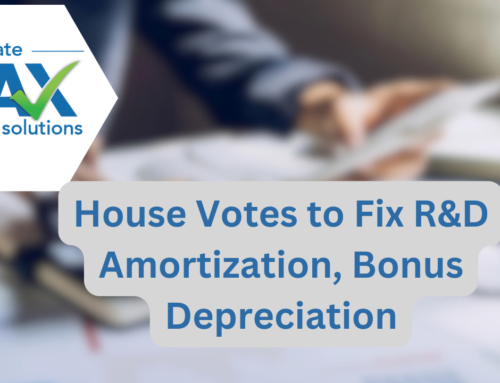The End of Bonus Depreciation?
As of this writing, one of the largest tax benefits for building owners will be phased out over the next few years. Bonus depreciation, which was enacted by the Tax Cuts and Jobs act in 2017 and allows building owners to take large deduction in a single year, will be reduced by 20% each year beginning in 2023. So, what does this mean? In 2022, a building owner (or tenant paying for leaseholder improvements) can write off 100% of the cost of qualified property. In 2023 only 80% can be written off, in 2024 only 60% can be written off, so on and so forth.
How can a building owners take advantage of large tax deductions before these provisions expire? By utilizing a tax strategy known as cost segregation in combination with bonus depreciation. While lawmakers may extend these provisions at some point, the window is closing for building owners to maximize this commercial property tax benefit. Thus, there has been an urge to strike while the iron is hot.
Cost segregation is a well-established tax savings tool for building owners and tenants paying for leaseholder improvements. This strategy utilizes the concept of accelerated depreciation which allows taxpayers take advantage of larger deductions in the near-term rather than spread out over the 27.5 or 39-year timeframe allowed by straight-line depreciation. This is done by segregating qualified components of a building from 39-year life to 5, 7, or 15-year life. Shorter depreciation life equals, larger deductions, equals lower taxable income and more cash in a building owner’s pocket.
Since the passage of the Tax Cuts and Jobs Act (TCJA) in 2017, the benefits of cost segregation have been amplified. The TCJA allowed for what is called 100% bonus depreciation, whereby any qualified property deemed to have a life of 20-years or less can be written off fully in the first year. Thus, since 2017, building owners have been able to deduct the full value of accelerated items from a cost segregation study in one tax year. Fully deducting these costs can create a tremendous benefit since it can allow owners to create a tax loss (thereby eliminating taxes owed). Any tax losses not used in the current year can be carried forward.
To illustrate how beneficial this can be for building owners, consider the following example:
Dr. Mark purchased a commercial building in 2019 for $1,000,000 and runs his practice out of this property. Under the straight-line method of depreciation Dr. Mark would get a $25,641 deduction on his taxes for depreciation. In 2022, Dr. Mark a cost segregation study was performed for Dr. Mark which found that $350,000 of building components could be accelerated to 5 and 15-year life. Dr. Mark’s CPA used this new depreciation schedule to place $350,000 worth of qualified property in service in 2022.
Since the rental activities of the building and operating the practice, both form an economic unit, Dr. Mark was able to take $350,000 worth of deductions in 2022 due to 100% bonus depreciation. Income from the medical practice before depreciation was $305,000. Thus, full use of the $350,000 created a tax loss for Dr. Will, meaning that he paid no income tax. The remaining $45,000 loss is carried forward.
In this example, if Dr. Mark purchased at a later date, or waited until 2023 to place in service, he would have still owed income tax, as shown in the table below:
| Bonus Depreciation for Dr. Mark | |||
| 2022 | 2023 | 2024 | |
| Income before depreciation | $305,000 | $305,000 | $305,000 |
| Accelerated Depreciation from Cost Seg | $350,000 | $350,000 | $350,000 |
| Bonus Depreciation allowed | $350,000 | $280,000 | $210,000 |
| Taxable Income | ($45,000) | $25,000 | $95,000 |
| Taxes owed (using 39% combined rate) | $0 | $9,750 | $37,050 |
| Taxes owed without cost segregation | $109,020 | $109,020 | $109,020 |
As can be seen from this table, cost segregation provides substantial value regardless of bonus depreciation rules. However, the allowance for 100% bonus depreciation puts a time value on accelerating depreciation now rather than waiting.
Alternate Tax Solutions has been performing cost segregation studies nationwide for nearly 20 years. Our experienced team can help identified qualified property to be accelerated and maximize the tax savings of building owners. These strategies are not straight-forward and require nuanced understanding of building science and tax law. For a free estimate of how cost segregation could put more money back in your pocket, contact ATS today.





